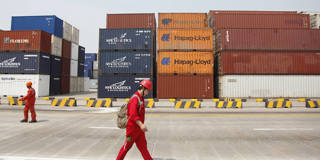
The G7’s Anti-Coercion Campaign Against China Could Backfire
When G7 trade representatives convene in Osaka on October 28-29, Chinese “economic coercion” is expected to be high on their agenda. But opposing China’s market-distorting industrial policies could inadvertently encourage other countries to erect their own trade barriers, exacerbating uncertainty and impeding global trade.
JAKARTA – On October 28-29, Japan will host the G7 Trade Ministers’ Meeting in Osaka. The primary focus of the gathering will be improving supply-chain resilience and strengthening export controls on critical minerals and technologies. But China’s “economic coercion,” particularly the widespread disruption caused by its non-transparent and market-distorting industrial policies, is also expected to be high on the agenda.